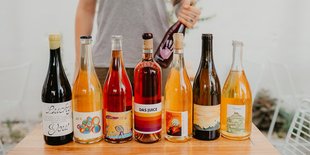What is Natural Wine? (10 Best Bottles 2025, How It’s Made, Taste)
Natural wine is one of the trendiest (and most misunderstood) topics in wine circles today!
It comes in myriad flavors - from “funky” to lively and complex, and is made in both traditional and unconventional styles.
But it's not something new.
In fact, winemakers have been producing naturally fermented grape juice for centuries, long before it became fashionable.
In this article, find out what natural wine is, whether it’s good for you, the taste profiles, production methods, styles, and the best natural wines of 2024.
We’ll also show how you can invest in fine wines with ease.
Further reading
- New to the world of investing in wines? Here’s your Comprehensive Wine Investment Guide.
- Explore the most popular Types of Wine available today.
- Wondering which is healthier - Red Wine vs. White Wine?
What Is Natural Wine?

Natural wine is wine made using the least amount of chemicals, additives, and technological interventions.
The grape varieties used for natural wine are grown organically or biodynamically, without any pesticides and herbicides.
It uses traditional, organic winemaking processes that respect the innate qualities of it’s terroir.
There’s little to no intervention during the fermentation process of the wine. So this wine is also known as low-intervention wine, raw wine, and naked wine.
Also, natural wine (or raw wine) has significantly less added sulfites (20 parts per million) than what is generally acceptable for conventional wine (350 parts per million in the US.)
Want to try some of the most exotic natural wines?
10 Best Natural Wines To Buy In 2024
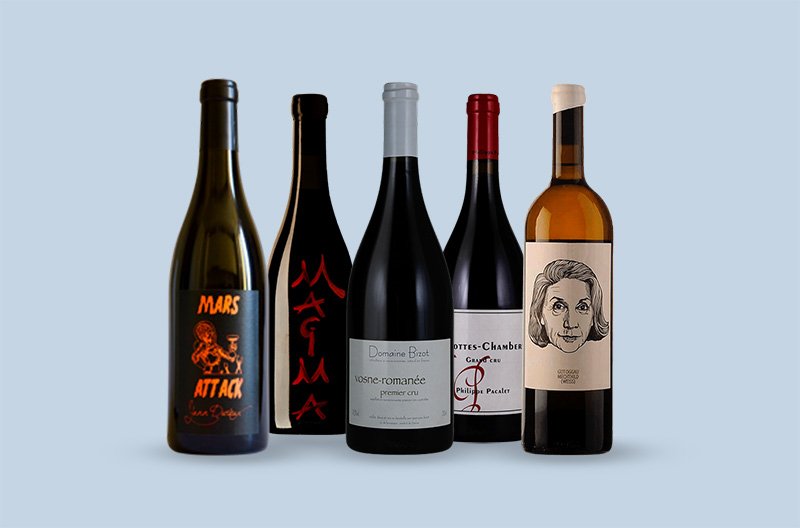
Here’s a round-up of the best natural wines you should try in 2024:
- 2014 Domaine Jean Yves Bizot Vosne-Romanee Cote de Nuits, France: $1,854
- 2015 Bruyère & Houillon Arbois-Pupillin Ploussard Jura, France: $544
- 2018 Philippe Pacalet Ruchottes-Chambertin Grand Cru, France: $458
- 2013 Domaine Jean Foillard Morgon 'Cuvée 3.14' Beaujolais, France: $373
- 2003 Yvon Métras Fleurie Cuvée l'Ultime Beaujolais, France: $302
- 2012 Agrapart & Fils Experience Blanc de Blancs Grand Cru Brut Nature Champagne, France: $280
- 2017 Frank Cornelissen 'Magma' Terre Siciliane Rosso IGT: $271
- 2010 Domaine Michel Gros Clos des Reas Vosne-Romanee Premier Cru, France: $210
- 2017 Yann Durieux - Recrue des Sens 'Mars Attack' Vin de France: $138
- 2018 Gut Oggau Mechthild Weiss Burgenland, Austria: $124
But can these lively natural wines age like their conventional counterparts?
Does Natural Wine Age Well?
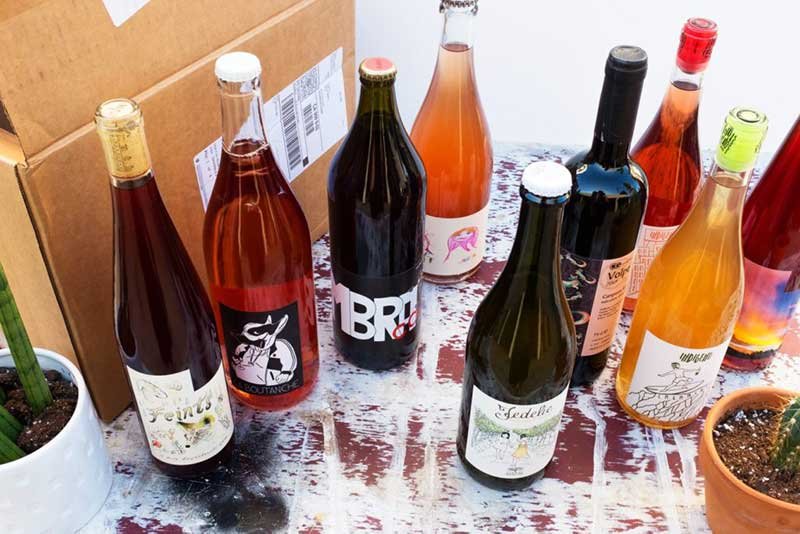
According to wine experts, natural wine is not a stable long-term investment because it’s prone to high volatile acidity, oxidation, cloudiness, and microbial spoilage.
The lower percentage of sulfites makes it highly sensitive and fragile than typical wines - making it unfit for transportation and cellaring.
In fact, most natural wines can go bad if not consumed within a year of their production.
But you can still try different natural wines from the wine list of a high-end restaurant or a wine bar. Or grab a funky French Glou Glou from your local wine shop!
But, if you’re keen to invest in wines, how do you go about finding investment-grade bottles from around the world?
The best way would be through a trusted online wine investment company like Vinovest.
Buy, Store, and Sell Fine Wines Through Vinovest

Vinovest is an AI-based platform that lets you buy, authenticate,store, and sell investment-grade wines online from Napa Valley, Loire Valley, or anywhere else in the modern wine world!
How Does It Work?
Get started with these four simple steps:
1. Sign up on the Vinovest website.
2. Answer a short questionnaire to determine your investing style.
3. Add a minimum amount of $1,000 to your Vinovest account.
4. Enjoy your favorite Italian wine as you watch your portfolio grow!
Benefits Of Vinovest
Here are some advantages of choosing Vinovest as your trusted wine investment partner:
- Easy Buying And Selling: Vinovest’s AI-based platform helps you buy and sell the best and rarest wines for your collection in just a few clicks.
- Best Prices: Vinovest specializes in sourcing wines from top wineries and global winemakers, eliminating middlemen and retail markups.
- Curated Portfolio: Vinovest combines the knowledge of Master Sommeliers with AI-driven algorithms to create a curated portfolio of investment-grade wines that reflect your preferences.
- Optimal Storage And Safety: Your Italian wine or any other wine bottle will be stored in bonded warehouses with 24/7 specialized cellar monitoring systems. The insurance policy also covers your bottle against damage, theft, and loss.
- Low Overall Costs: Vinovest charges a low annual fee of 2.5% (which becomes 1.9% for a portfolio above $50,000.) This fee covers your wine purchases, storage, fraud detection, insurance as well as active management of your portfolio.
- Deep Network: You get access to the rarest bottles from brilliant wine producers in the wine industry. You also get exclusive access to wine tasting events of renowned and upcoming wineries.
- Tax Advantages: The bonded warehouses do not charge any excise duty and VAT, and that allows Vinovest to pass on significant tax advantages to you.
- Easy Delivery: Want to celebrate with the gorgeous Pinot Noir you just brought? Or found the right buyer for your prized Italian Red Wine in Spain? All you have to do is tell Vinovest where and when to send it, and they’ll handle the shipping.
Now, let’s dive deeper into the natural wine world and start with a glimpse into the winemaking process.
How Is Natural Wine Made?

Natural wine is usually produced by small-scale, independent winemakers. The typical winemaking process is as follows:
- The vines are handpicked from an organic vineyard.
- Depending on the winemaker, the grape undergoes carbonic maceration, which involves filling a sealed vessel with carbon dioxide and then adding whole, intact organic grape bunches.
- After carbonic maceration, further fermentation of the grape juice is done using native yeast or indigenous yeast (unlike cultured yeast used in conventional winemaking.)
- The addition of sulphites to the fermented grape juice is kept to a minimum by the winemaker,and no other additives are added.
- The winemaker either ferments the wines in clay amphoras or leaves the wine in contact with the skins for a prolonged period (extended maceration.)
- Usage of industrial techniques (like clarification or blending with other alcohol) is kept to a minimum during the natural winemaking process.
Let’s explore how natural winemaking techniques differ from the approach used for organic wine, biodynamic wine, and regular wine.
How Is Natural Wine Different From Organic Wine, Biodynamic Wine, And Regular Wine?
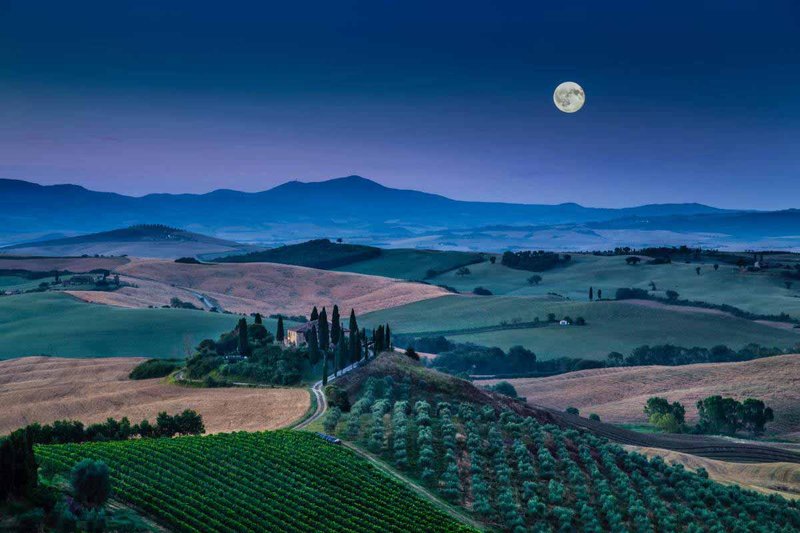
Organic and biodynamic wine can be classified as natural wine, but the reverse might not always be true.
Let's look at the differences between these wines:
1. Organic Wine
A bottle of organic wine is made from grape varietals that grow in a vineyard where no chemical fertilizers and herbicides are used.
Organic wines can also contain additives - as long as they are organic.
2. Biodynamic Wine
Biodynamic winemaking uses a spiritual-ethical-ecological approach in viticulture. Biodynamic winemakers treat a vineyard as a wholesome, living organism, attuned to the cycles of nature.
A biodynamic farmer may also use astrological configurations to devise a planting calendar.
In biodynamic farming, chemical fertilizers and pesticides are forbidden, similar to organic viticulture. The winemaking process focuses on sustainability and reducing carbon footprint.
3. Regular Wine
Regular wine (non natural wine) is more likely to include additions of acid, tannin, enzymes, yeast, bacteria, and different preservatives.
A conventional winemaker typically uses new oak-aging in regular winemaking because it modifies the wine structure and adds complexity to the “non natural wine.”
Because conventional wine is more processed than natural wine, there are significant differences in appearance, aroma, and flavor profile.
Natural Wine Characteristics and Tasting Notes
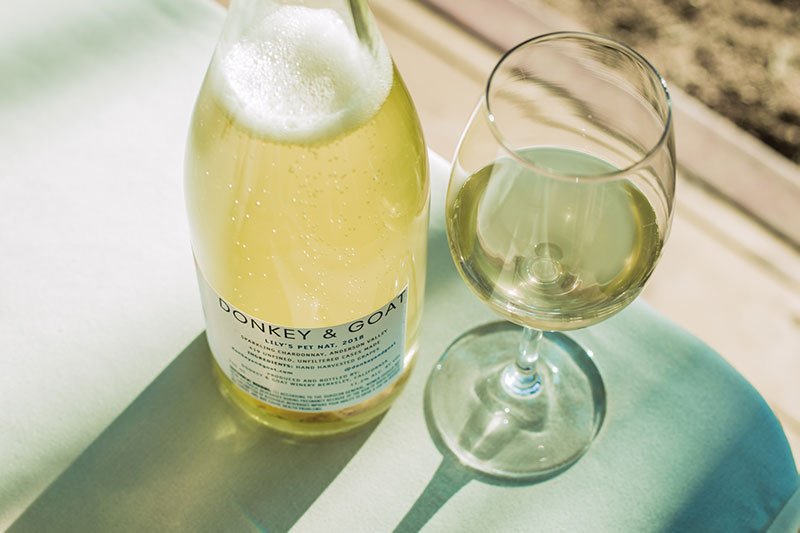
Each natural wine is unique because the terroir and the fermentation process differ in every vineyard.
However, here are a few common characteristics that all natural wines develop during or after the winemaking process:
- Tends to become cloudy: Unlike conventional wine, natural wine is unfiltered or unrefined. This makes it cloudy over time. A natural winemaker will not artificially stabilize the wine before bottling, to preserve its natural state. So if you want a clearer, more brilliantly colored wine, give the bottle time to settle before serving.
- Has a natural “sparkle”: Natural wine is fizzy, unlike conventional wine, where the winemaker removes the gas from the wine. The fizziness is a by-product of fermentation, and a natural winemaker embraces this au natural state as it compliments the wine-drinking experience. If you’re not a fan of the fizz, just decant it and swirl to disperse the bubbles!
- Varying tastes: No two natural wines will ever taste the same. The wild indigenous yeast found in different vineyards imparts distinct aromas and flavors to the wine.
So, how does natural wine taste?
- Natural wine is fermented longer to enable the grape juice to completely turn into wine without any intervention. This gives the wine a nice tang accompanied by sour notes.
- The taste of natural wine is complex, with higher acidity and a yeasty flavor.
- Natural wine is often less fruity and has an aroma similar to sour beer, yogurt, or cider.
Natural Wine Styles
Here are three well-known styles:
1. Pétillant Naturel
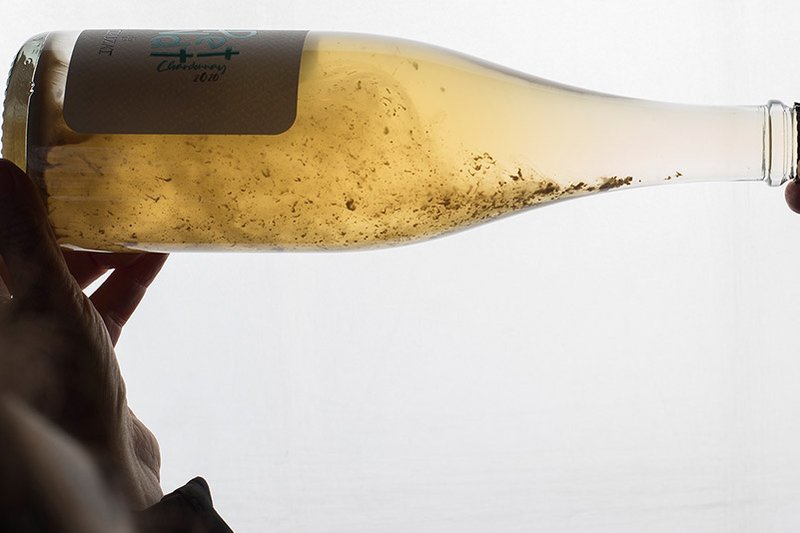
Also known as “Pét-nat,” this sparkling natural wine is made using the oldest wine production method (Méthode Ancestrale.)
This involves bottling the wine while the fermentation is going on, giving it a natural spritz.
Some of the best Pét-nat come from the Loire Valley, Limoux in France, and Italy.
2. Orange Wine
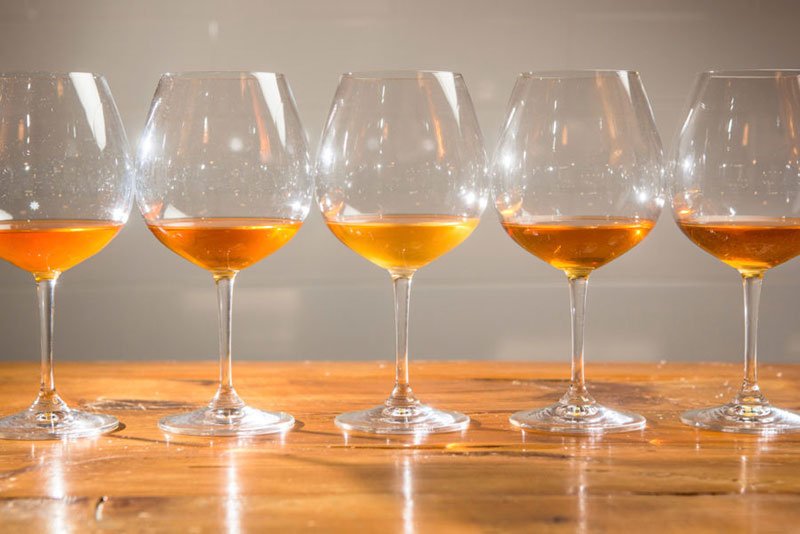
Orange wine is a white wine which goes through the same fermentation process as a bottle of red wine.
The skin and seeds are kept in contact with the grape juice for an extended time during fermentation. The wine picks up colors ranging from pale straw and golden to very dark orange, and hence the name.
A majority of orange wine bottles are made in northeastern Italy, Slovenia, Georgia, and France.
3. Prosecco Col Fondo
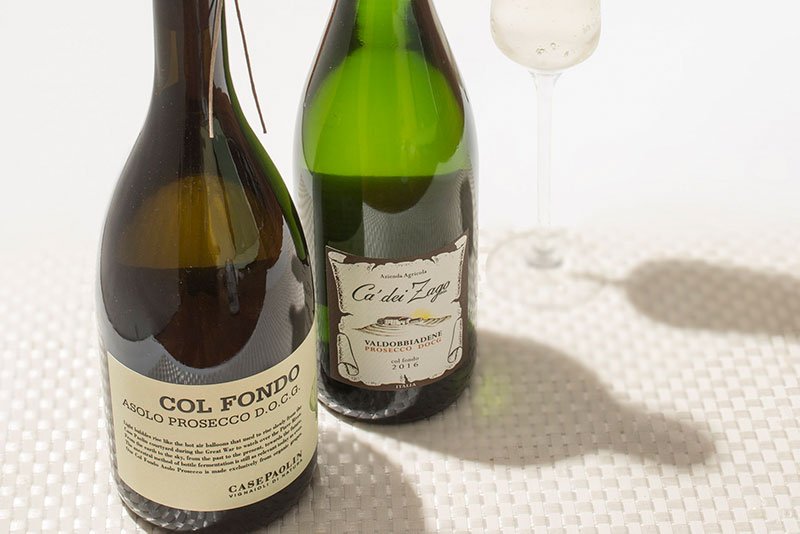
Prosecco Col Fondo is made by provoking a secondary fermentation to a base wine and then sealing the bottle.
‘Col Fondo’ means wine ‘with the bottom’ because it becomes cloudy due to the dead yeast or lees that remains in the bottle.
Let’s take a look at some wine regions that embrace the natural winemaking process.
Natural Wine Regions
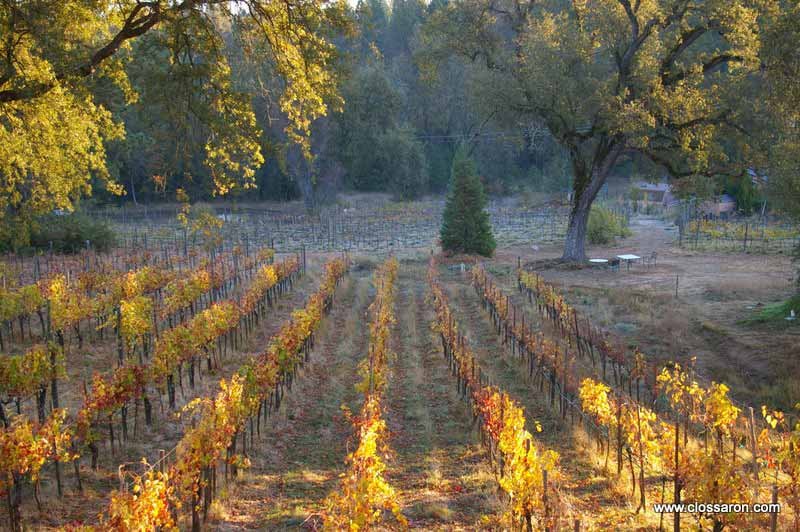
Today, you’ll find natural winemakers in almost every major wine growing region.
France's Loire Valley was one of the first regions to produce minimal intervention wines in the 1970s and continues to be a leading producer. Natural wine producers can also be found in other French regions like Jura, Beaujolais, and Savoie.
The natural winemaking movement has also started to attract a growing number of followers and importers in America.
Some popular California based wineries like Dry Farm Wine, Clos Saron, and Coturri (in Sonoma County) are well-known natural wine producers.
Cities like New York, San Francisco (Bay area), and LA are also becoming hotspots of the natural wine bar and wine shop culture.
This growing popularity of natural wine brings us to one of the most critical questions.
Are Natural Wines Good For You?
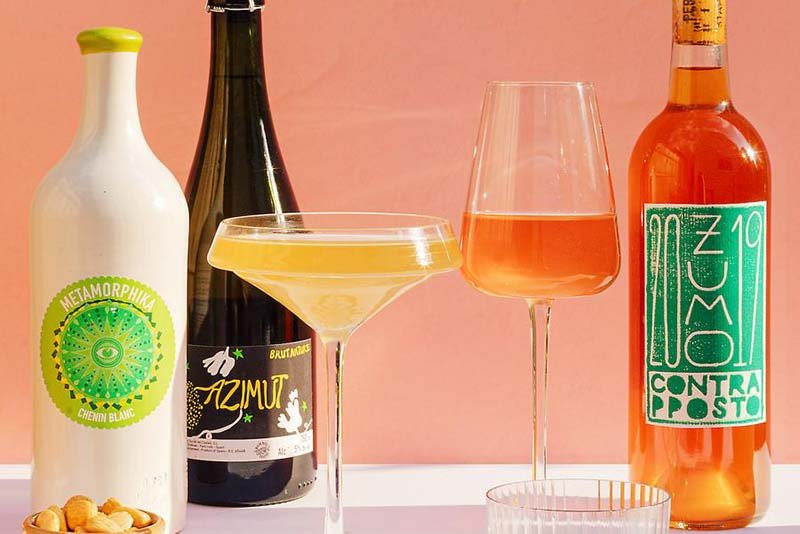
The production of natural wine leaves no room for additives, sulfites, or any other manipulation. As a result, many believe it to be a healthier option over conventional wine.
But there isn't enough evidence to support this statement.
Although natural wine is made from organic grapes, no certification regulates its production.
Because natural wines are unfiltered, impurities (biogenic amines like Tyramine) and native yeast (microbes) are included in the bottle. Studies have shown these elements may lead to headaches and migraines.
So if you’re a natural wine lover, go ahead and savor your favorites! But the jury is still out on whether natural wine is the best choice from a health perspective.
Does Natural Wine Cause Fewer Hangovers?

The belief that sulfites in alcohol cause headaches and hangovers is widespread and quite controversial.
Sulphites are a naturally occurring by-product of the fermentation process - in both natural and conventional wine.
Since natural wine contains fewer sulfites, drinking it should (in theory) cause a milder hangover than conventional wine.
But the limited research and studies by wine experts suggest that it’s too early to conclude that natural wine causes fewer hangovers.
How Do You Store Natural Wine?

Natural wine requires careful handling and storage. Some pointers to keep in mind are:
- Drink your natural wine within a year of purchase and try to source them locally to avoid spoilage during transportation.
- Keep natural wine at a temperature below 26.7°, preferably in a fridge or wine cellar.
- Avoid keeping bottles near LEDs or any other bright light sources.
This will help preserve your favorite wine for longer.
Let’s take a step back to understand how natural wine became so widely sought after by wine lovers.
The Origins and Journey of Natural Wine
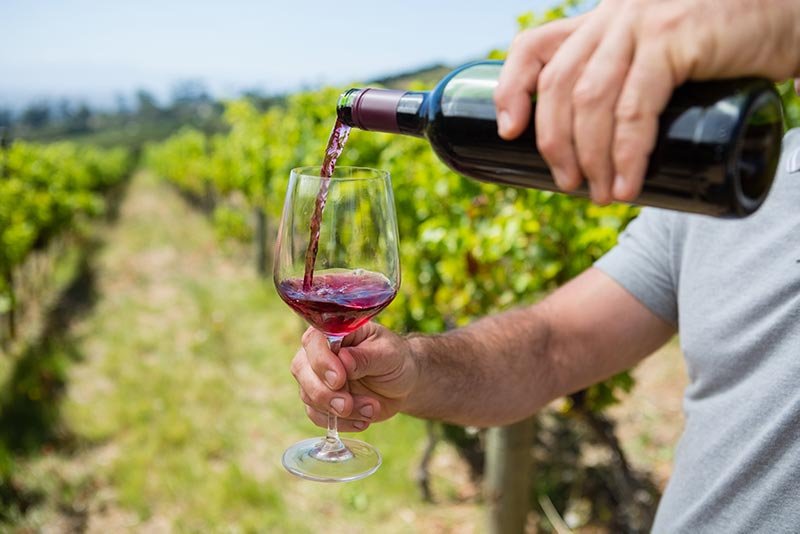
Some sources claim that the natural wine movement originated in the Beaujolais region of France in the 1960s. French winemakers wanted to re-adopt traditional winemaking methods.
It was spearheaded by winemaker Marcel Lapierre along with Jean Foillard, Charly Thevenet, and Guy Breton (The Gang of Four.)
They were inspired by the teachings of Jules Chauvet and Jacques Neauport, two well-respected oenologists, who had done ample research on natural winemaking processes.
In fact, the history of natural wine can be linked to the Lebensreform movement (Germany) of the late 19th and early 20th centuries. This movement propagated a natural lifestyle of eating organic food, among other ideologies.
This movement gradually spread from the French town of Villié-Morgan (where the Gang Of Four was based) to the rest of France and other regions.
Today, it is on the wine list of most acclaimed restaurants and is a hot topic among sommeliers and the wine industry in general.
Sip A Natural Wine While You Build a Fine Wine Portfolio
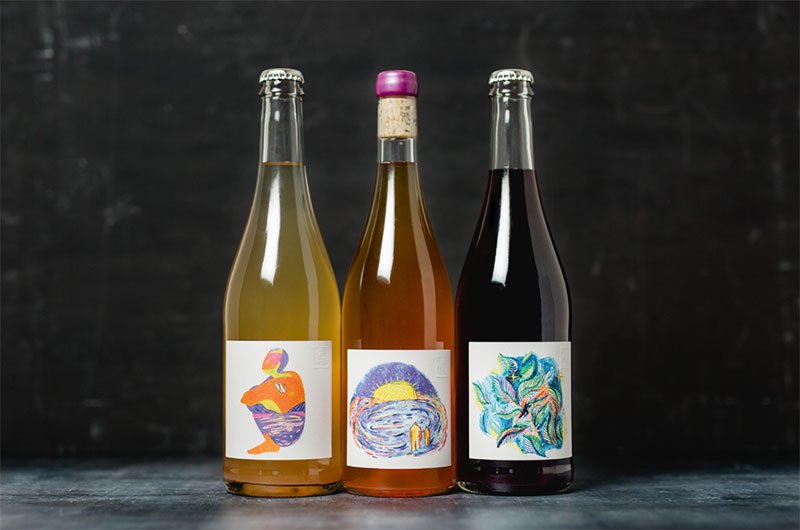
Although natural wine makes up only 1% of all the wine produced globally, it challenges the definition of a “good wine” and breaks the status quo making it “trendier.”
The natural wine movement might have some exciting developments in the future - so keep an eye out for it! You could source your favorite natural wine label from your local wine shop or winery.
As for investing in fine, investment-grade wines, get started by signing up on Vinovesttoday!
